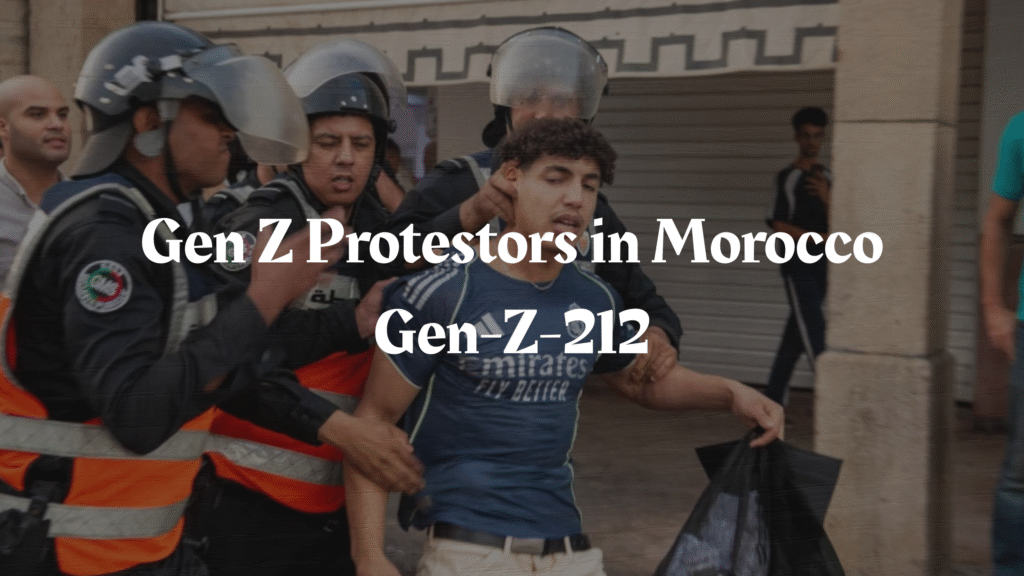Late September 2025 saw Morocco traverse a pivotal moment: sweeping protests erupted across
multiple cities, led by a generation demanding accountability, dignity, and a new social contract.
While not a sudden flash, the demonstrations crystallized grievances long simmering under the surface. Here’s a detailed look at how the events unfolded, what drove them, and what they might mean.
Setting the Stage: Why Now?
Deepening Frustrations with Public Services

Morocco’s youth have long faced systemic challenges: high unemployment, limited upward mobility, and underfunded public sectors. In recent weeks, outrage reached a boiling point after the tragic death of eight pregnant women in a public hospital in Agadir, sparking anger over deteriorating healthcare standards.
Protesters drew a stark contrast between the state’s investment in stadiums and sports infrastructures—partly in preparation for hosting major football events (e.g. the 2030 FIFA World
Cup)—and neglect of hospitals, schools, and clinics. Slogans like ‘Stadiums are here, but where are the hospitals?’ circulated widely.
Youth Leadership, Decentralized Organizing Unlike earlier protests organized by official parties, unions, or NGOs, this wave is largely youth■led and decentralized. A movement calling itself GenZ 212 played a central role, operating via social media platforms such as TikTok, Instagram, Discord, and Facebook to mobilize peers.
The 29 September Protests: How Things Played Out
Widespread Mobilization.
By 29 September, protests were underway in at least 11 cities, including Casablanca, Rabat,
Marrakech, Agadir, Tangier, and Oujda. Dozens were arrested across cities. In Casablanca, for example, 21 young protesters were detained after they blocked a highway near the Korea district,
chanting slogans demanding reform in health, education, and justice.
Demands in Focus:
Protesters articulated demands spanning: health and hospital reform, education reform, jobs and economic opportunity, and anti■corruption and social justice. These demands reflect a broader social contract challenge: people are no longer just asking for reforms in single sectors, but calling for a realignment of national priorities.
Responses & Risks
Government’s Reaction
So far, the Moroccan authorities have largely avoided comprehensive public engagement. They
have responded through security measures: dispersals, arrests, and efforts to block gatherings.
There has been no formal statement yet acknowledging all protester demands.
Risks, Opportunities, and What Comes Next
- Escalation vs. Dialogue: Without an interlocutor, the movement may risk fragmentation or radicalization. But if the government offers credible channels for dialogue, some demands could be absorbed without further turmoil.
- Sustainability: Young movements often burn bright but fade. Sustaining momentum will require new narratives, organizational modalities, and possible alliances (e.g. civil society, moderate political actors).
- Media & Narrative Control: The role of digital media is central. The state may try to curb online mobilization or crack down on content. Protesters will attempt to maintain narrative control.
- Precedent for Future Mobilization: This moment may serve as a template. If youth in Morocco see that mobilization yields results, it could reshape the dynamics of protest and governance for years.
Without an interlocutor, the movement may risk fragmentation or radicalization. But if the government offers credible channels for dialogue, some demands could be absorbed without
further turmoil. The protests of 29 September 2025 in Morocco represent more than isolated episodes of anger. They are a signal: a generation demanding to be seen, heard, and included in
shaping their country’s future.



